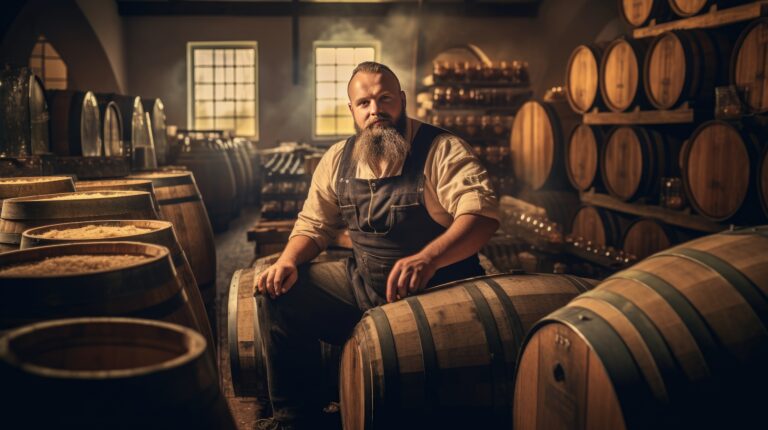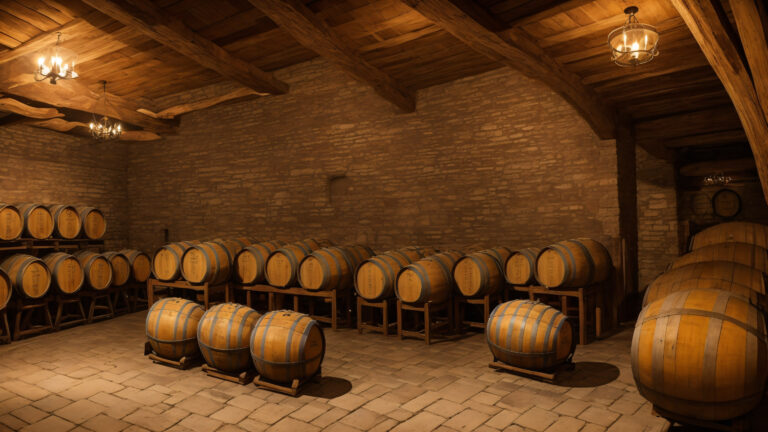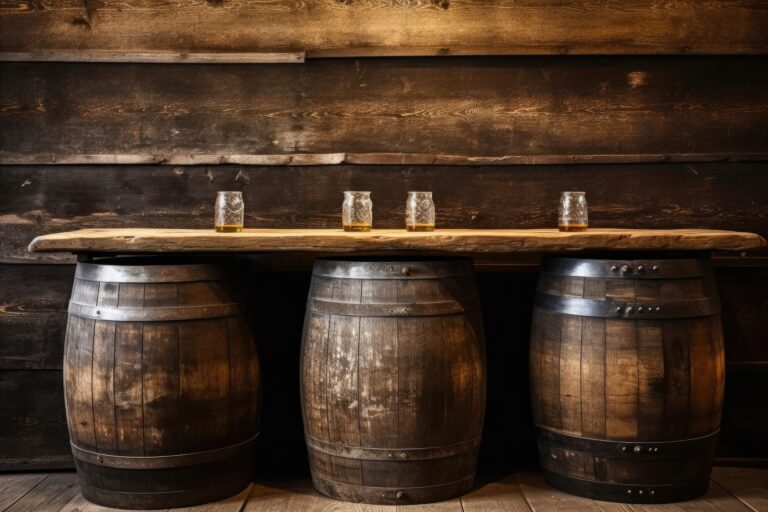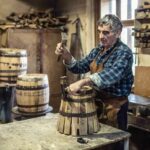Alright, whiskey lover, buckle up! You fancy yourself a connoisseur, right? You can drop terms like “caramel notes” and “oak finishes” like it’s second nature, you’ve probably done the distillery tour thing, and “top shelf” is practically your middle name at the local watering hole. But how deep does your knowledge truly go when it comes to that liquid gold sloshing in your glass? The real lowdown is, there’s a universe beyond just grain recipes and maturation periods. We’re talking about the nitty-gritty of whiskey regulations, the legal backbone governing everything from the very oak barrel used to the whiskey bottle labeling. Many of these distillery laws are actually there to safeguard whiskey quality and guarantee authenticity, but let’s be real, some are purely for whiskey marketing. This peek behind the velvet rope might just recalibrate how you appreciate and enjoy your next dram. As they say, the devil’s in the details, so pour yourself a generous two fingers of your preferred bourbon or rye whiskey and let’s dive into a crash course on whiskey law.
What Is Authentic Barrel Aging?
When we talk about authentic barrel aging, we’re talking about the art of maturing whiskey in charred oak barrels to bestow that signature flavor and color. It’s a non-negotiable for bourbon, which, by law, must be aged in brand-spanking-new, charred oak barrels. For our friends across the pond, Scotch whisky actually has the flexibility to use previously used barrels.
The Barrel’s Impact
The barrel, my friend, is utterly fundamental to the entire whiskey aging process. As that raw spirit mingles with the wood, it’s soaking up all sorts of glorious compounds, like vanillin, which gives you those lovely vanilla notes. And that charred interior of the barrel? It’s actively caramelizing the whiskey, adding depth and sweetness.
Climate Control
Temperature plays a huge role in how quickly your whiskey ages. Think about it: colder climates, like those in Scotland, mean a much slower aging process, leading to a refined character. On the flip side, warmer regions like Kentucky really speed things up. Even the barrel’s location within the whiskey warehouse makes a difference; higher floors tend to be toastier.
The Aging Requirement
Uncle Sam has some pretty clear rules about minimum aging requirements for certain American whiskies. For example, bourbon absolutely has to chill out for at least two years. If you’re aiming for that premium “bottled-in-bond” designation, you’re looking at a minimum of four years. And for Scotch whisky, the clock ticks for at least three years. Of course, many premium whiskey brands go above and beyond, aging their spirits for 10-18 years or even longer to achieve that unparalleled smoothness and complexity.
Additives Prohibited
Authentic barrel aging means absolutely no funny business with additives. We’re talking pure ingredients here: just water, yeast, malted barley, and sometimes a touch of wheat or rye. A tiny dash of caramel coloring might be permitted for consistency, but that’s pretty much it. No artificial flavors, no sweeteners, and certainly no other weird concoctions. These are stringent whiskey production laws designed to maintain integrity.
Single Barrel vs. Small Batch
Ever wondered about the difference between “single barrel” and “small batch” bourbon? A “single barrel” bourbon comes from, you guessed it, just one barrel, allowing its truly unique and distinct flavors to shine through. On the other hand, “small batch” whiskey is a carefully curated blend of a select few barrels, aiming for a more consistent and harmonious flavor profile. Both approaches can yield absolutely fantastic results – it all boils down to your personal taste preference.
In the end, authentic barrel aging is nothing short of an art form. Master distillers skillfully craft these amazing spirits, guided but never truly governed by the rules. The outcomes, when executed with precision and passion, are quite simply liquid gold.
History of Barrel Aging Regulations
The roots of barrel aging regulations stretch back to the late 19th century. As whiskey started to really take off, some less-than-scrupulous distillers began cutting corners and adulterating their spirits to inflate profits. To put a stop to this, the groundbreaking Bottled in Bond Act was passed in 1897. This law mandated that whiskeys carrying this designation had to be produced by a single distiller within a single distilling season and aged for a minimum of four years in a federally bonded warehouse.
This pivotal act genuinely guaranteed a level of quality and authenticity for consumers. Over time, as whiskey production methods evolved, additional regulations were put in place to safeguard certain distinctive spirits. For bourbon, specific standards of identity were established in 1964, requiring it to be made from at least 51% corn, distilled to no more than 80% ABV, and aged in new charred oak barrels.
For Tennessee whiskey, like the iconic Jack Daniel’s, the unique process of charcoal mellowing was specifically defined. And for single malt Scotch whiskies, like Glenlivet, requirements were set stipulating the exclusive use of malted barley and aging in oak casks for a minimum of three years. These regulations have been instrumental in allowing barrel-aged spirits to develop those consistent, distinctive flavors we’ve come to know and love over generations.
While some might see regulations as stifling, in the realm of barrel-aged spirits, they’ve been absolutely crucial to safeguarding whiskey quality, authenticity, and truth in labeling. They instill confidence in consumers about what’s actually in their bottle. The rich, complex flavors we’ve grown to expect from bourbon, Scotch, and other wood-aged spirits are a direct result of centuries of tradition, meticulous process, and sound regulation. All in the name of crafting an unadulterated, premium whiskey product.
So next time you gently swirl and savor your favorite aged spirit, raise a toast to the foresight of those who worked tirelessly to protect the integrity of fine whiskey. Their efforts have ensured that what’s proudly displayed on the label is indeed what’s genuinely in your glass. Nothing but the genuine article.
Current Laws on Minimum Barrel Aging Time
The laws surrounding minimum barrel aging requirements are fundamentally designed to protect the authenticity of whiskies. Without these regulations, some producers might be tempted to cut corners, sacrificing whiskey quality to reduce costs and rush products to market. For consumers, these minimum aging laws provide assurance that you’re getting a quality, traditionally-made spirit.
Current U.S. Laws
In the U.S., the TTB (Alcohol and Tobacco Tax and Trade Bureau) is the governing body that regulates minimum aging for all spirits. For whiskies proudly labeled as “straight bourbon” or “straight rye,” the minimum barrel aging is a solid 2 years. However, if a whiskey is simply labeled as “bourbon” or “rye,” there’s actually no minimum aging requirement in the U.S.
This means a producer could technically age it for just a few months before bottling and still call it bourbon or rye whiskey. That said, most reputable, quality-focused producers still age their spirits for at least 2-3 years to ensure proper flavor development.
For “bottled-in-bond” bourbon and rye, the minimum aging is a robust 4 years, and it absolutely must be aged in a federally-bonded warehouse under strict U.S. government supervision. This designation truly guarantees a high-quality, properly aged product.
International Laws
Whiskey laws naturally vary in other countries. For instance:
- In Canada, Canadian rye whisky must be aged for a minimum of 3 years. Canadian whisky in general must contain whisky aged for at least 3 years.
- In Scotland, single malt Scotch whisky has a strict minimum of 3 years of aging. Blended Scotch whisky must also contain whisky aged for at least 3 years.
- In Ireland, Irish whiskey must be aged for a minimum of 3 years.
- In Japan, whiskies must be aged for at least 3 years to proudly qualify as “Japanese whisky.”
While these whiskey regulations are primarily aimed at safeguarding quality and tradition, some folks might view minimum aging laws as overly restrictive. However, the vast majority of whiskey drinkers genuinely appreciate the assurance that they’re enjoying an authentic, time-honored spirit. Overall, aging regulations have been instrumental in establishing high standards for whiskey worldwide.
Labeling Rules for Age Statements
The rules governing age statements on whiskey labels can be surprisingly intricate. As a consumer, it’s super important to grasp what these regulations truly mean and how to properly interpret them for whiskey purchasing.
Mandatory Age Statements
If a whiskey producer decides to include an age statement on their label, they are legally bound to follow strict regulations. That age statement must reflect the youngest drop of whiskey in that bottle. So, if a blend contains whiskies aged 3, 5, and 12 years, the age statement absolutely has to be “3 years.” A producer cannot use an average age – no cheating!
Optional Age Statements
Whiskey producers aren’t actually obligated to include an age statement on their labels. If they choose not to, they gain more flexibility in blending whiskies of various ages. The producer is still required to adhere to regulations regarding proper whiskey aging, but without an age statement, they have greater creative freedom in crafting the desired flavor profile.
Added Color and Flavor
Here’s a big one: whiskey producers are generally prohibited from adding artificial color or flavor to their whiskey. The color and flavor must come exclusively from the wooden barrels used during aging. Adding anything artificial to manipulate the color or flavor would be considered adulterating the whiskey, which is a big no-no and illegal.
Barrel Proof and Bottle Proof
The alcohol percentage listed on a whiskey label must be the proof directly off the still before dilution. Nothing can be added to manipulate that proof level. Most producers will cut the barrel proof whiskey with water before bottling to reach a specific bottle proof, usually somewhere around 80-100 proof. But some producers will bottle the whiskey at its raw barrel proof to allow whiskey aficionados to experience the spirit at its full, uncut strength, often 110 proof or higher.
Non-GMO and Organic
Currently, there are no specific whiskey regulations around using non-GMO grains or organic production methods for whiskey. Producers are free to make these claims and even seek certification as non-GMO or organic if they choose. However, without official certification, consumers have no real way of verifying these types of label claims. So, buyer beware when it comes to these specific declarations.
These whiskey regulations are ultimately designed to ensure quality, authenticity, and transparency for consumers. Understanding how to interpret the information on a whiskey label will empower you to become a savvy buyer of one of America’s most prized spirits.
Ensuring Authenticity With Warehouse Receipts
To genuinely ensure the authenticity of aged whiskey, distillers employ a meticulous system of warehouse receipts. These crucial documents track every single whiskey barrel from the moment it’s filled until it’s bottled. Each barrel is assigned a unique identifying number, which is meticulously recorded on the receipt along with key details like:
- The distillery where it was produced
- The type of barrel used (e.g., new charred oak, ex-bourbon, etc.)
- The exact date it was filled with spirit
- Its precise location within the rickhouse where it’s stored
Following the Barrel
As the whiskey barrel moves around the rickhouse over its years of aging, every single movement is carefully noted on the receipt. This creates an unbroken chain of custody, guaranteeing that the liquid inside is precisely the same spirit that was originally barreled. Some forward-thinking distilleries even allow customers to track the specific barrel used for their very own bottle of whiskey!
When it’s finally time for bottling, the barrel is emptied, and the final details are added to the receipt, including:
- The bottling date
- The bottle yield (the amount of whiskey obtained from that barrel)
- Any pertinent notes on the flavor and aroma character
The completed warehouse receipt is kept on file to authenticate that particular bottle of whiskey for years to come. Some distilleries even include details from the receipt, like the barrel number, bottling date, or rickhouse location, directly on the actual product label – a true mark of whiskey transparency.
For serious whiskey collectors, the more information provided about a bottle’s history, aging, and provenance, the more valuable and sought after it becomes. The warehouse receipt system provides whiskey connoisseurs with the ultimate confidence that they’re experiencing an authentic, quality product exactly as the distiller intended.
Overall, the meticulous use of detailed warehouse receipts is one of the hallmarks of a truly craft whiskey operation focused on transparency and producing a premium, handcrafted spirit. While whiskey regulations may vary in different countries and regions, in the US, this system helps ensure authenticity and supports an ethical, trustworthy whiskey industry.
How Distilleries Achieve Authentic Flavor Profiles
To craft an truly authentic barrel-aged flavor, distilleries meticulously select their whiskey barrels and expertly manage the entire aging process. The specific barrel type used, its char level, and the very climate in which it’s aged all play a crucial role in shaping the final flavor profile.
Barrel Selection
The wood variety and the barrel’s previous use both significantly determine how much flavor it will impart. Bourbon barrels, typically made of American white oak, are very commonly used for aging whiskey. Barrels that previously held sherry or port wines can also be employed, lending intriguing fruity notes. The more a barrel is reused, the less flavor it generally provides. For a bolder flavor, distilleries often opt for barrels used only once or twice before.
Barrel Char
Before being filled, whiskey barrels undergo a process called charring – they’re exposed to an open flame that blackens the interior. The char level, ranging from a light toast to a heavy char, directly influences how much flavor the barrel contributes. A heavier char usually means more pronounced flavors of vanilla, caramel, and even smoke. Lighter toasts allow more subtle wood and spice notes to come through.
Climate Control
The location and temperature where barrels are aged dramatically impact how quickly flavors develop. Colder climates slow down the aging process, allowing for a more gradual and refined flavor development, while warmer areas speed it up. Many distilleries age barrels in open-air warehouses, embracing the natural seasonal temperature changes. This often results in a complex blend of flavors from different aging rates within the same batch. Some distilleries, aiming for ultimate consistency, utilize climate-controlled warehouses to precisely manage aging conditions.
Blending
To achieve a signature flavor profile, distilleries skillfully blend whiskies from different barrels. Blending whiskies aged in barrels with varying levels of char, different wood varieties, and from diverse climates helps create a remarkably complex, balanced, and consistent flavor. Master distillers carefully taste and select barrels to blend for bottling, it’s truly an art form in itself.
Through meticulous barrel selection, charring, aging, and blending, distilleries are able to craft an authentic whiskey with a flavor profile that is entirely its own. The sheer variety of options available allows for both delightful consistency and exciting innovation, yielding whiskies with truly distinctive characters.
Potential Loopholes and Controversies
As with any highly regulated industry, whiskey regulations are designed to protect consumers, but they can also, at times, inadvertently create loopholes and spark controversy. Some potential issues include:
Barrel Usage Restrictions
Regulations stipulate that barrels can only be used once for aging bourbon. Some argue this limits innovation in the whiskey industry. Allowing barrels to be re-used could potentially unlock new flavors and aromas in certain types of whiskey. However, re-using barrels also carries the risk of losing the distinctive taste that new charred oak barrels impart specifically to bourbon. It’s an ongoing debate with valid points on both sides, a classic whiskey industry debate.
Labeling Requirements
Regulations are intended to ensure authenticity and prevent misleading whiskey marketing. However, some terms aren’t as clearly defined as they could be, leading to consumer confusion. For example, a “single barrel” bourbon could technically contain whiskey from multiple barrels that were then blended together to achieve consistency, though true “single barrel” means from one specific barrel. Some critics argue this potentially misleads consumers who genuinely expect whiskey from only one specific barrel. Defining terms more precisely could certainly help, but it might also limit creative freedom for distillers. It’s a complex issue with no easy answers.
International Trade Barriers
Strict whiskey regulations around barrel aging, bottling, and labeling can sometimes make it difficult for smaller craft distillers to export their products, hindering growth. However, loosening regulations too much risks compromising overall quality and authenticity. Whiskey trade organizations are actively working to balance these priorities and make it easier for small distillers to ship products internationally without sacrificing the hard-won quality standards. Compromise and sustained cooperation will be absolutely key to making progress on this front.
Overall, whiskey regulations aim to protect the integrity of whiskey, but they can also, if taken to an extreme, stifle innovation. Ongoing discussion around potential controversies will help ensure that regulations continue to serve the best interests of both producers and consumers. The ultimate goal should always be to promote quality and authenticity, not to limit exciting possibilities. With open dialogue and a shared commitment to integrity, regulations and innovation can absolutely work hand-in-hand in the whiskey world.
Best Practices for Transparency
As modern consumers become increasingly concerned about transparency and authenticity in the foods and drinks they consume, whiskey makers have a vital responsibility to ensure best practices for transparency in their whiskey production methods and labeling.
Honest Aging Statements
The age statement on a bottle of whiskey must unequivocally reflect the actual minimum age of the whiskey in that bottle. For example, if a bottle proudly declares “10 Years Old” on the label, every single drop of whiskey in that bottle must have been aged in barrels for at least 10 years. Using vague words like “Reserve” or “Special Reserve” implies an older age, so regulations rightfully prohibit them unless the specific age is also clearly listed.
Barrel Type and Origin
If a whiskey prominently promotes that it was aged in a particular type of barrel, such as ex-bourbon or sherry casks, regulations require that all whiskey in the bottle was indeed aged in that precise barrel type. The origin of the barrels must also be accurately described. For example, a Scotch whisky aged in ex-bourbon casks must use casks that previously held bourbon from the United States. No cutting corners or misrepresenting the whiskey aging process.
Additives and Flavorings
This is crucial: whiskey makers cannot add any artificial additives, flavorings, or colorings to alter the aroma, taste, or appearance of the final product. The only exceptions are adding water to achieve the proper alcohol percentage for bottling and a tiny, tiny amount of caramel coloring for consistency across batches. Any additions beyond these must be clearly and prominently stated on the label – no hidden ingredients allowed in authentic whiskey.
Transparency in Production
Reputable whiskey brands are increasingly open and honest about their entire whiskey production process, from the source of their raw ingredients to distillation, aging, and bottling. They often invite the public to tour their facilities and see exactly how their products are made. In today’s interconnected world with social media and review sites, any practices viewed as deceptive or misleading can be quickly exposed, severely damaging a brand’s hard-earned reputation.
Maintaining best practices for transparency and authenticity in how your whiskey is produced, aged, and marketed is absolutely key to building lasting trust with consumers and safeguarding your brand’s integrity. When in doubt, disclose more details rather than less, as today’s discerning whiskey drinkers truly value honesty and openness.
Authenticity in Barrel Aging FAQs
Many whiskey drinkers naturally have burning questions about barrel aging and authenticity. Here are some of the most frequently asked questions about whiskey aging:
How Long Does Whiskey Have to Be Aged to Be Called Bourbon or Scotch?
For bourbon, it must be aged in new, charred oak barrels for at least two years. For Scotch whisky, the minimum aging period is three years. Many premium whiskey brands are aged significantly longer for more complex and nuanced flavors.
Does Barrel Aging Improve the Flavor of Whiskey?
Absolutely, yes! Barrel aging is unequivocally essential for giving whiskey its distinctive color and incredibly complex taste. As the whiskey interacts intimately with the wood, it absorbs beneficial compounds like vanillin that impart those desirable flavor and aroma notes like vanilla, caramel, and spice. Generally, the longer a whiskey ages, the more complex and refined its flavor profile becomes.
What Types of Barrels Are Used in Whiskey Aging?
The most common whiskey barrels are made of American or French oak. American oak tends to produce those classic bourbon-like flavors of vanilla, caramel, and coconut. French oak often yields more subtle notes of cinnamon and clove. Some innovative distillers experiment with barrels that previously held sherry, port, or even wine to create genuinely unique and intriguing flavor profiles.
Does Barrel Aging Increase the Alcohol Content of Whiskey?
No, barrel aging does not increase the alcohol percentage in whiskey. As whiskey ages in the barrel, it naturally loses volume due to evaporation – this phenomenon is famously known as the “angel’s share.” What remains in the barrel has the same alcohol concentration but a more concentrated array of flavor and aroma compounds. The final bottled product is then typically diluted with water to reach the proper bottling strength, usually around 80 to 95 proof.
Can Barrel Aging Be Sped Up?
Some distillers do experiment with using smaller barrels to increase the surface area to volume ratio, which can indeed speed up the aging process and flavor extraction. Others try barrel inserts and staves to add wood flavor notes more rapidly. However, most experts widely agree that nothing can truly replicate the slow, natural aging process required to produce a fine, authentic premium whiskey. While modern innovations may approximate certain wood-derived flavors, the profound subtlety, complexity, and exquisite balance of a long-aged spirit remains, to this day, unmatched.
Final Thoughts
So there you have it, the genuine truth behind how whiskey truly acquires its distinctive flavor and rich color. Barrel aging isn’t just a process; it’s an intricate art form that demands patience, exceptional skill, and unwavering adherence to strict whiskey laws to achieve perfection. Next time you take a thoughtful sip of your favorite aged whiskey, you’ll undoubtedly have a newfound appreciation for the immense care and dedication that went into creating that smooth, complex flavor. While shortcuts may seem tempting to some, true whiskey quality can only ever come from time, unwavering commitment, and genuine dedication. The distillers who deeply respect the process, the law, and their loyal customers are the ones who consistently produce a spirit truly worth savoring. Authenticity always shines through in the end.







